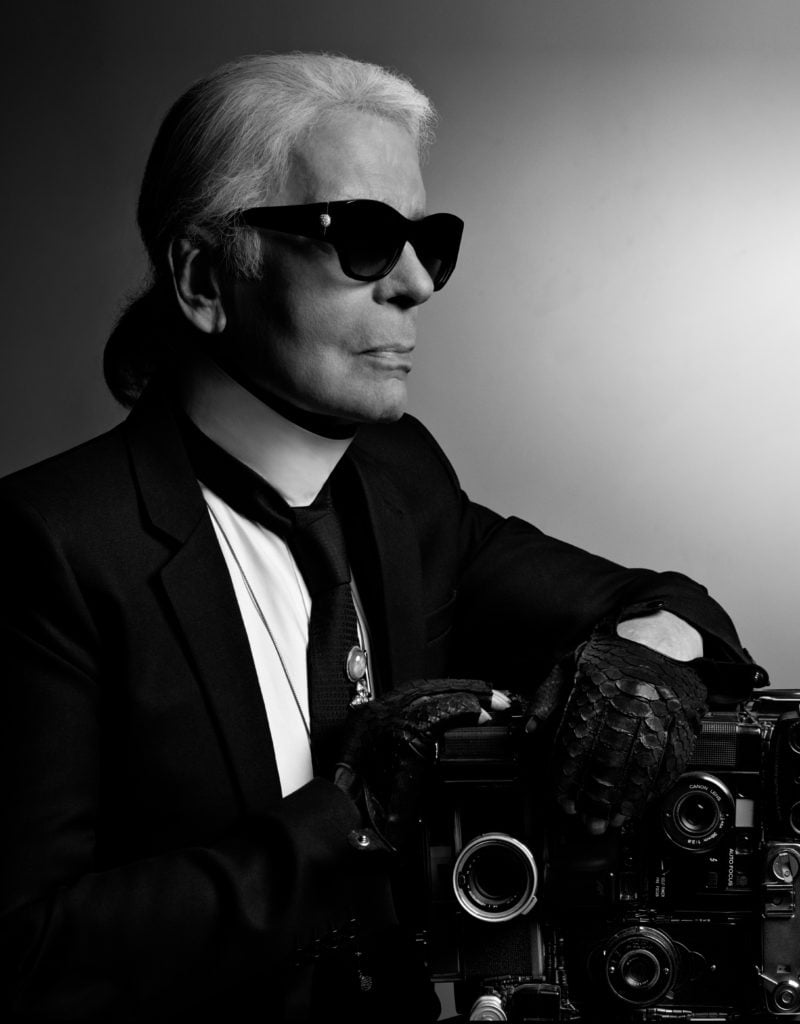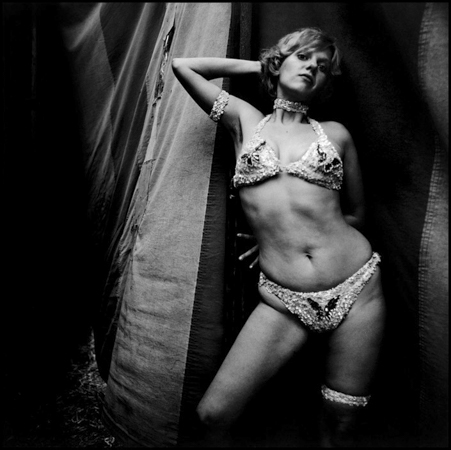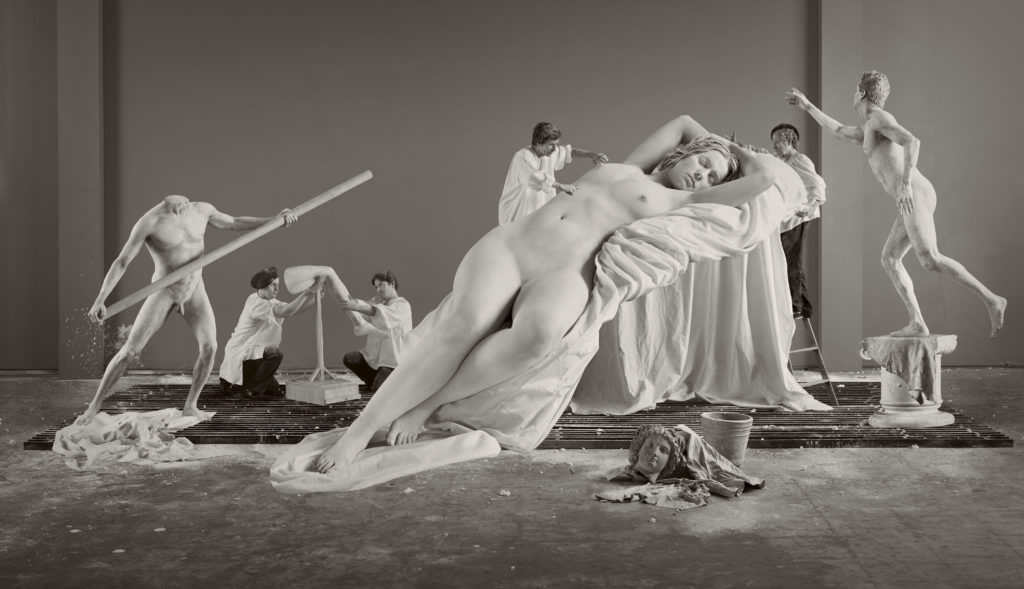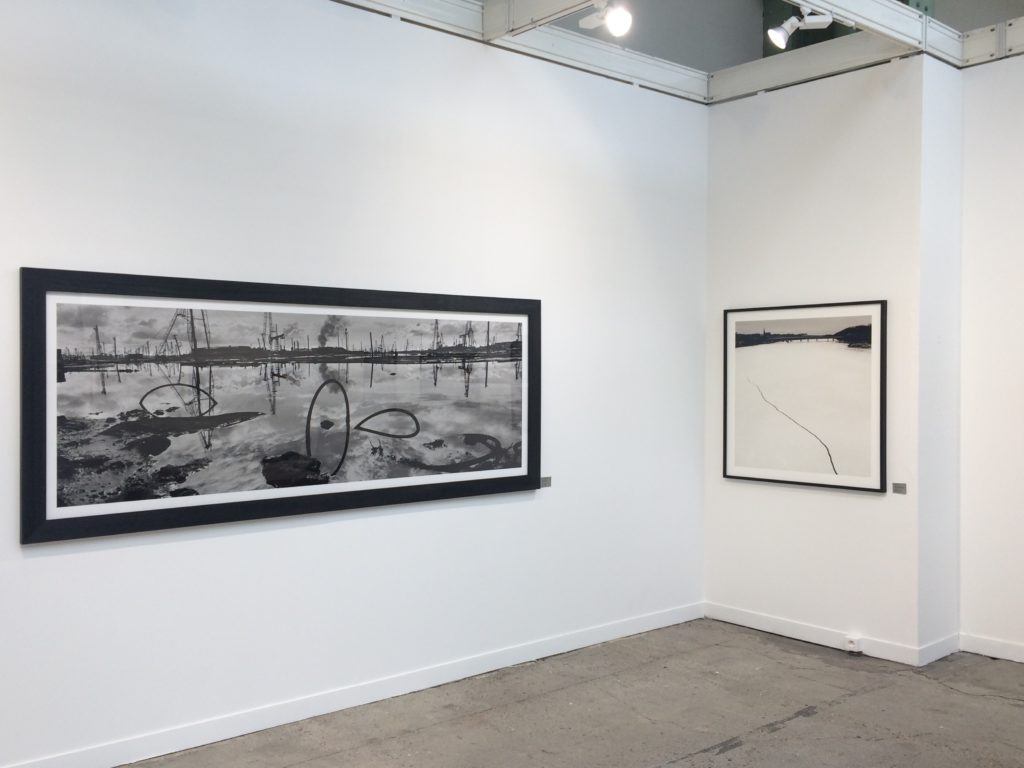Heading to This Year’s Paris Photo? Here’s a Guide to What’s New—and What Not to Miss


Artnet Gallery Network

When Paris Photo was founded in 1997, it was the first annual fair dedicated solely to photography. Today, multiple photo fairs around the world compete for industry attention—but the French forebear remains the largest. The fair returns for its 21st edition this weekend, bringing 190 galleries and publishers from 29 countries to its longtime home at the Grand Palais. Never one to rest on their laurels, however, organizers have introduced a few new elements this time around.
For the first time, Paris Photo is launching a new sector exclusively dedicated to film and video. The project is a collaboration with the French distribution company and chain of movie houses MK2, which owns a theater in the Grand Palais.
The fair has also partnered with Karl Lagerfeld, the German fashion designer and creative director of Chanel, Karl Lagerfeld. The “guest of honor,” who is himself an accomplished photographer, has chosen some 100 photos that are on view throughout the fair and will be brought together in a special edition book published by Steidl.

Karl Lagerfeld. Courtesy Paris Photo.
But Lagerfeld is not the only draw. A striking number of exhibitors—30—will be presenting solo booths dedicated to individual photographers. If you find yourself in the Grand Palais this weekend, here are some striking booths to look out for.

Susan Meiselas,
From “Carnival Strippers” (1972-1975).
11.5 x 17.5 inch gelatin silver print. Courtesy of Danziger Gallery.
Forty-five years after Susan Meiselas first began her three-year-long look at the world of New England traveling girl shows, the resulting body of work—her “Carnival Strippers” series—is being presented as a solo presentation at Danziger Gallery’s Paris Photo booth. The series, edited down to 26 stark black-and-white photos (18 35-mm pictures, and eight medium format portraits), is just as powerful now as it was then.
Also on view at Danziger’s booth is a selection of playful Polaroid portraits from fashion illustrator Antonio Lopez. Though much more colorful and flashy, Lopez’s photos complement Meiselas’s pictures more than you might think: ultimately, both series are portraits of vulnerable outsiders.

Eleanor Antin, Constructing Helen from “Helen’s Odyssey” (2007). Courtesy Richard
Saltoun Gallery.
Richard Saltoun brings a selection of works by key feminist artists to this year’s fair, including photographs by Eleanor Antin, Ana Mendieta, Carolee Schneemann, Jo Spence, and Francesca Woodman, among others. “We have always worked with and represented feminist artists,” Niamh Coghlan, the gallery’s associate director, told artnet. “But there has never been a more prescient moment than now to look at what their work meant and how it intended to revolutionize—and whether anything has actually changed. The response to our presentation has been tremendous, and perhaps sad: sad that we are still in a position where important works by important artists are still undervalued and under-recognized because of the gender of the artist.”
The work of Spence, in particular, has been on the rise of late, according to the gallery. “Her work is raw, autobiographical and unapologetic,” Coghlan said. “Dealing with breast cancer, dieting, and societal pressures on women, she is one of the most important feminist photographers of the 20th century.”

Mathieu Bernard-Reymond, “Transformation (Vanish 32, Strasbourg)” (2016). Courtesy Baudoin Lebon.
The Paris-based gallery Baudoin Lebon is presenting a solo stand of works by French photographer Mathieu Bernard-Reymond. Taken from his Transform series, the works began as photographs of industrial structures in hydraulic electricity production facilities and a nuclear power plant, before being abstracted to various degrees in post-processing. Bernard-Reymond’s works are collaged along the gallery’s walls, some on top of one another, doubling down on the gesture of distorting the indexicality of the source imagery. The gallery also has a small booth within the booth, showing visitors a selection of works by other artists in its stable.

Garry Fabian Miller, “Our bright dream,” 2014-15. Light, water, Lambda C-print from dye destruction print. Courtesy the Artist and Ingleby, Edinburgh.
Ingleby will split its offerings into two presentations. On, Wednesday, November 8 and Thursday, the 9th, it will hang the colorful prints of Garry Fabian Miller, while on the following Friday and Saturday, it will show pictures from New Zealand photographer Ben Cauchi. The work of both artists will be shown simultaneously on Sunday, the last day of the fair.
Miller, a pioneer in camera-less photography, evokes the medium’s earliest experiments. Working almost exclusively in the darkroom, he meticulously exposes sensitized paper by shining light through colored glass and other filters. The results, with their glowing geometric shapes, look like documentary photographs of light and space installations—and in a way, that’s what they are.
Similarly, Cauchi channels photography’s early techniques by making unique photograms or using the wet-collodion process to produce ambrotypes and tintypes. “They are, in a sense, photographs of nothing,” Cauchi said in a statement. “I’m not so much trying to put an image in front of the viewer as offering them an obscured mirror—what they see in it is entirely up to them.”

An installation view of Magnum Photos’ booth at Paris Photo. Courtesy Magnum Photos.
This year is a big one for Magnum Photos. It’s the venerable co-operative and publisher’s 70th anniversary, and they are using their Paris Photo booth to show off some of their rich history and current roster of promising young artists.
“We decided to present a selection of iconic images of our photographers, spanning all generations,” Magnum’s gallery director Christina Vatsella said. A panorama by Czech-French photographer Josef Koudelka is juxtaposed with “a very powerful image by Matt Black, showing how the new generation of Magnum photographers is nurtured by historical figures and keeps up with the Magnum tradition of ground-breaking photography making.” Magnum is also showing a handful of rare vintage prints by Werner Bischof, Bruce Davidson, and Eve Arnold, as well as a selection of work by a younger generation of photographers such as Bieke Depoorter, Jonas Bendiksen, and Carolyn Drake.